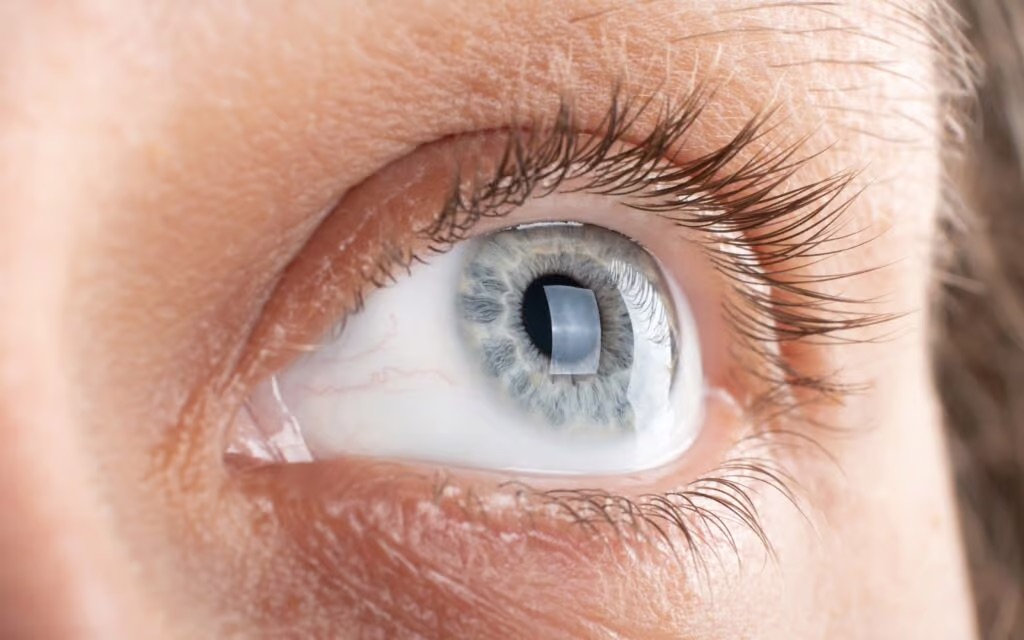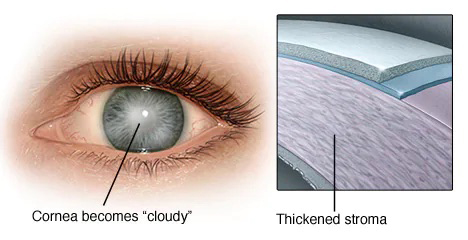 Fuchs’ dystrophy is a genetic eye condition affecting the cornea, the clear front part of the eye. Although present from birth, it often becomes noticeable in middle age or later. The disease affects the corneal endothelium, a layer of cells responsible for maintaining proper fluid balance. As these cells deteriorate, fluid builds up in the cornea, leading to swelling, blurred vision, and discomfort.
Fuchs’ dystrophy is a genetic eye condition affecting the cornea, the clear front part of the eye. Although present from birth, it often becomes noticeable in middle age or later. The disease affects the corneal endothelium, a layer of cells responsible for maintaining proper fluid balance. As these cells deteriorate, fluid builds up in the cornea, leading to swelling, blurred vision, and discomfort.
Symptoms of Fuchs’ Dystrophy
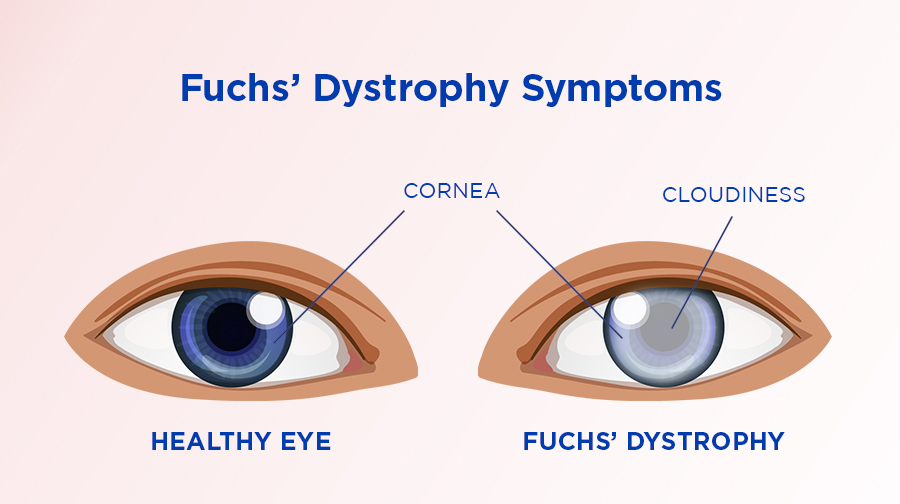 One of the earliest signs of Fuchs’ dystrophy is blurry or hazy vision, especially in the morning. Fluid accumulates in the cornea overnight, causing swelling, and vision may improve as the day progresses. As the disease worsens, these symptoms can last longer, sometimes persisting all day.
One of the earliest signs of Fuchs’ dystrophy is blurry or hazy vision, especially in the morning. Fluid accumulates in the cornea overnight, causing swelling, and vision may improve as the day progresses. As the disease worsens, these symptoms can last longer, sometimes persisting all day.
Other common symptoms include:
– A gritty or rough sensation in the eye
– Sensitivity to bright light
– Fluctuating vision, especially in humid conditions
– Glare or halos around lights
– Blurred vision with reduced contrast sensitivity
These symptoms can interfere with daily activities like reading or driving. Early diagnosis is crucial for managing the disease effectively.
Diagnosing Fuchs’ Dystrophy
Fuchs’ dystrophy is often diagnosed during routine eye exams. Several diagnostic tools help confirm the condition:
1. Slit Lamp Examination: A high-magnification tool used to detect early signs, such as tiny bumps (guttae) on the cornea.
2. Pachymetry: A test that measures corneal thickness, which can increase due to fluid buildup.
3. Specular Microscopy: This imaging test examines the endothelial cells of the cornea to assess damage.
Treatment for Fuchs’ Dystrophy
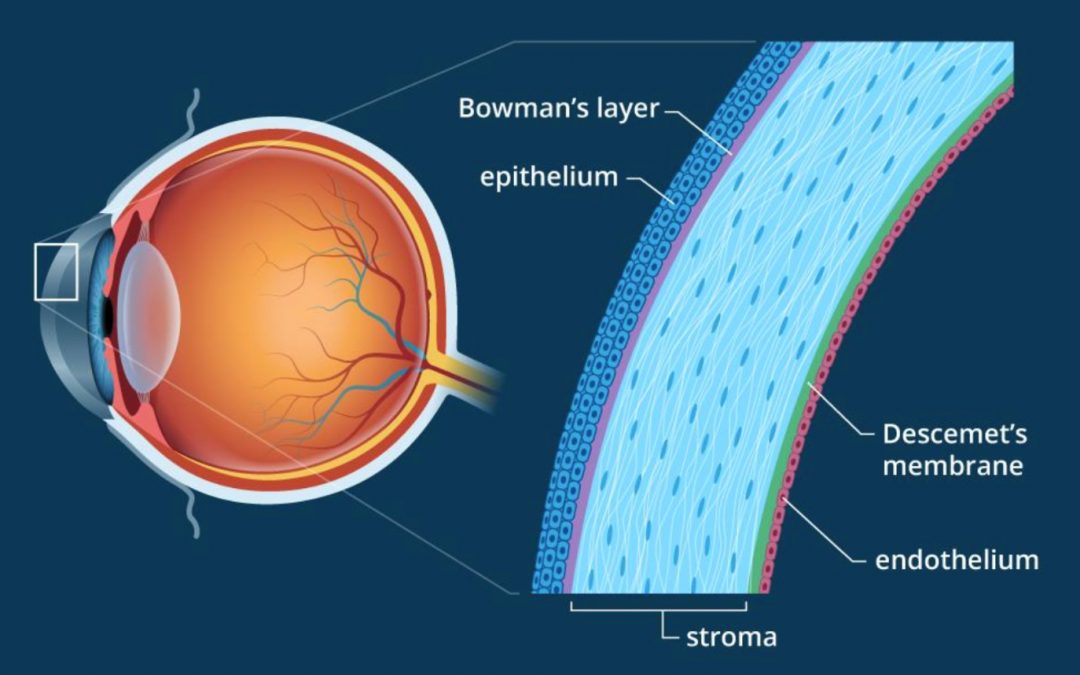 While there is no cure for Fuchs’ dystrophy, treatments can help manage symptoms and slow the progression of the disease. In the early stages, saline eye drops or ointments may be used to reduce corneal swelling and improve vision.
While there is no cure for Fuchs’ dystrophy, treatments can help manage symptoms and slow the progression of the disease. In the early stages, saline eye drops or ointments may be used to reduce corneal swelling and improve vision.
Advanced Treatments
For advanced stages of Fuchs’ dystrophy, surgical treatments may be necessary. The most common surgery is a corneal transplant. Two types of transplants are commonly performed:
1. Descemet Stripping Automated Endothelial Keratoplasty (DSAEK): This procedure replaces the damaged inner layer of the cornea with donor tissue.
2. Descemet Membrane Endothelial Keratoplasty (DMEK): A more advanced technique that replaces only the thinnest layer of cells. DMEK offers faster recovery and fewer complications.
Novel Therapy: Vyznova (Neltependocel)
In a breakthrough for treating corneal endothelial diseases, Aurion Biotech announced the launch of Vyznova (neltependocel) in Japan. Vyznova is the first approved cell therapy for the treatment of corneal endothelial disease, specifically bullous keratopathy. This therapy, which has received both regulatory and reimbursement approval in Japan, marks a significant advancement in the treatment of diseases like Fuchs’ dystrophy. Vyznova offers a promising alternative to traditional surgical methods by targeting the damaged endothelial cells and restoring corneal function.
Fuchs’ Dystrophy and Cataracts
Fuchs’ dystrophy often coexists with cataracts. In mild cases, cataract surgery may suffice, but in advanced stages, a combined cataract and corneal transplant surgery may be recommended for a shorter recovery time.
Avoiding Laser Vision Correction
Patients with Fuchs’ dystrophy are generally advised against elective laser vision correction surgeries like LASIK, as these can further damage the already weakened cornea.
If you are experiencing symptoms of Fuchs’ dystrophy, consult with our specialists to explore your treatment options, including cutting-edge therapies like Vyznova.





